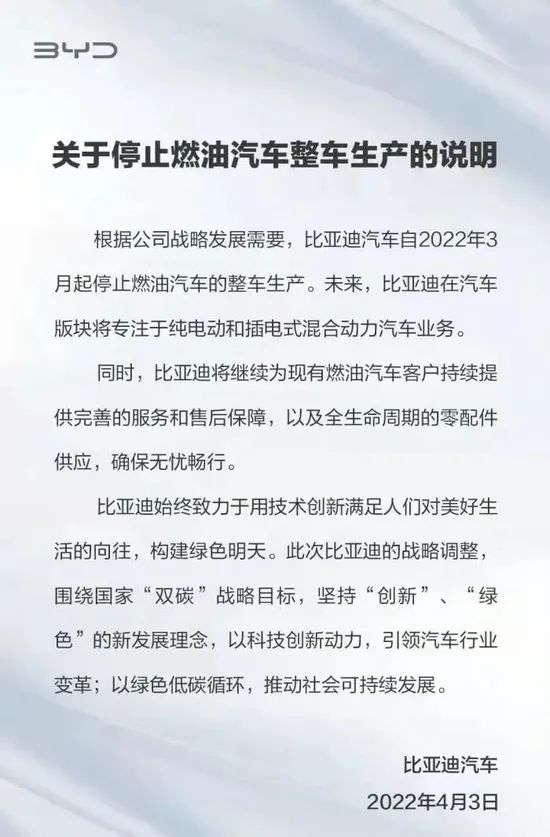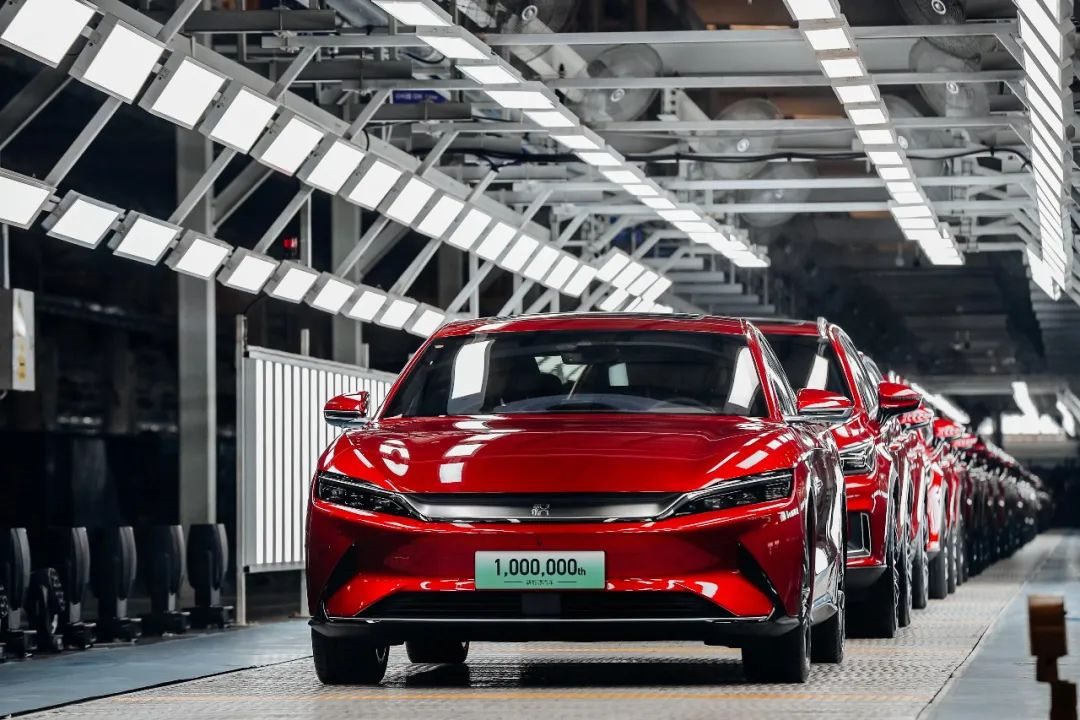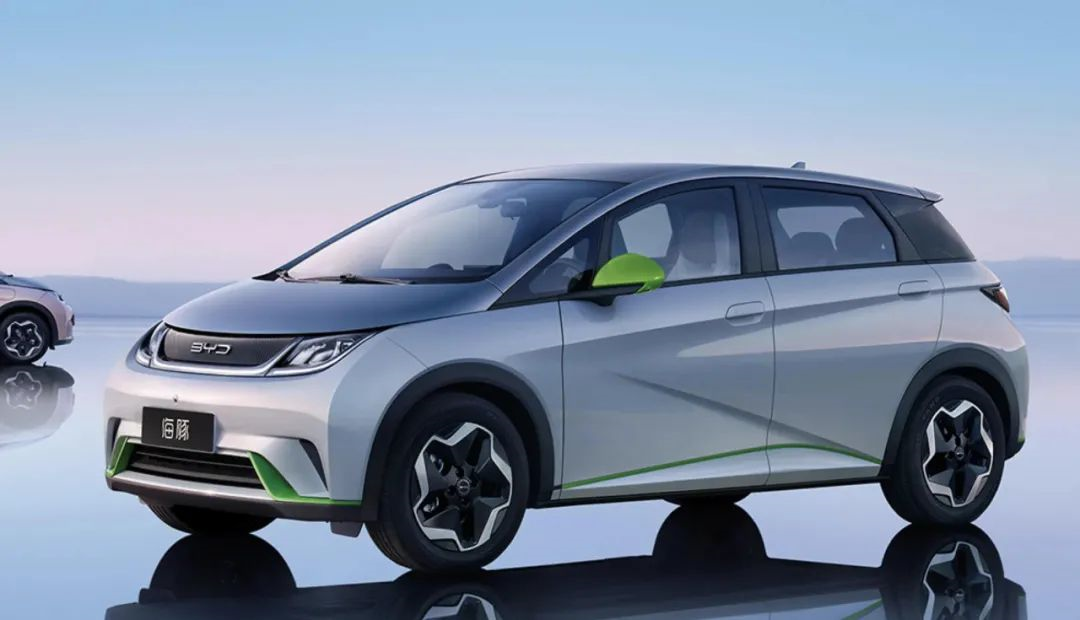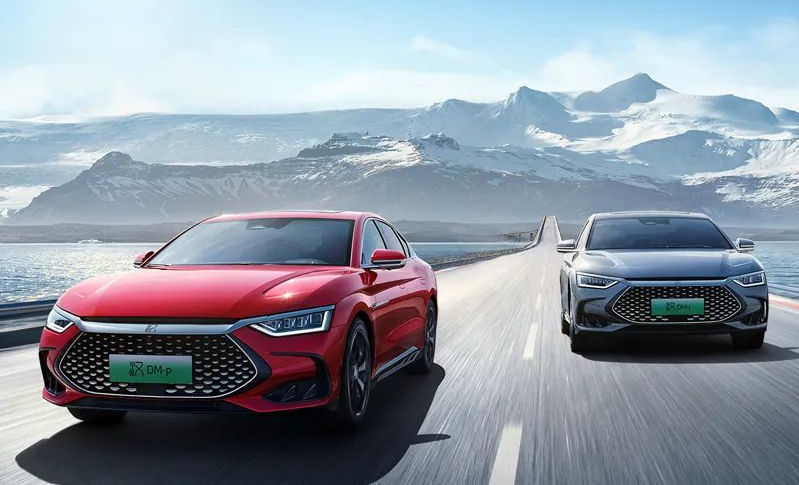Article by Kachi
Editor | Zhou Changxian
“Have you ever considered giving up?”
“Never.”
“Why not?”
“I never give up.”
In a TV interview program, Musk answered two questions decisively. Regardless of whether people are familiar with Musk, they know he is a bold innovator. Tesla, the “public enemy” of Detroit founded by him, has become a mountain that traditional giants have to cross in their transformation.
In the Chinese market, Tesla also brought the same “shark effect”. It appeared before consumers with a subverter’s attitude and popularized a series of technology-related terms, such as chips, Autopilot full-stack software, big data, in-car OS, and whole-vehicle electronic architecture.
Just like when people were frequently asked, “Who is the Detroit of China?” The topic of “Who is the Tesla of China?” has never stopped. In fact, people know that what is causing impact on traditional car companies is not only the emergence of new energy vehicles, but also the “transference” of the right to formulate new rules.
For a time, chaos ensued. The revolutionary momentum of Musk’s “never considering giving up” made the countdown to the ban on global fuel vehicles even more urgent.
Although Volvo, Jaguar, Volkswagen, Audi, Ford, and Honda have all announced plans to stop producing fuel vehicles, no one dares to write down a specific timetable. They are hesitant, hoping to find a balance point between fuel vehicles and new energy vehicles.
They say Musk is a “person who naturally pursues difficult technology”, which has given traditional giants a headache. However, there is one person who does not feel troubled or even can be said to be “excited by technological revolution”, and that is Wang Chuanfu, the founder of BYD.
As is known to all, Wang Chuanfu is a natural “problem solver” in technology. Since obtaining the qualification to produce cars in 2003, he has set the ultimate goal-great development of electric vehicles.
Wang Chuanfu, who has a restrained appearance, has a very enterprising personality and never gives up easily. Under his leadership, BYD has also developed the same personality in its 19-year automotive manufacturing career, always surging ahead with the slogan “Dream On, and All in”.
Now, after lurking in the market and technology research and development for years, BYD has made substantial progress. Its sales volume has shocked the industry. What is even more shocking is that BYD has become the first car company in the world to officially announce the cessation of production of fuel vehicles.
On April 3, BYD announced that “In accordance with the company’s strategic development needs, the production of whole vehicles of fuel vehicles will be stopped from March 2022. In the future, in the automotive sector, the company will focus on pure electric and plug-in hybrid vehicle businesses.”“`

Bid Farewell to Fuel Vehicles
Compared with the timetable for other car companies to stop producing fuel vehicles and completely transform to new energy vehicles between 2025-2030, BYD’s decision to “bid farewell” to fuel vehicles is unexpectedly “bold” in terms of time and speed.
Is it a reckless act of impulse, or a wise decision?
Cutting off Fuel Vehicles
It is not easy to aim the sword of the times at the traditional fuel vehicle sector, which is one of the lifelines, and it requires courage. For Wang Chuanfu, making this decision is also a decisive move after comprehensive consideration.
Firstly, this is the trend. Under the background of “carbon neutrality”, increasingly stringent environmental standards continue to promote the widespread use of new energy vehicle technology in China, Europe and the United States. As the leader of the national automotive industry, BYD has a responsibility to take technological innovation as its goal to lead the transformation of the automotive industry.
At the beginning of its creation, BYD set the ultimate goal of “building electric vehicles.” As early as 2004, the pure electric concept car ET was unveiled at the Beijing Auto Show, which was the first new energy concept car of a Chinese car brand. In 2018, the sales of BYD’s new energy vehicles were basically equal to that of fuel vehicles. So far, BYD’s new energy vehicle models have accumulated to 1 million vehicles.
Currently, among the global market, Tesla has achieved cumulative sales of over 1 million. BYD is the second, and the first in the domestic new energy vehicle market.

Secondly, it involves the struggle for industrial discourse power. In the era of fuel vehicles, Europe, America, Japan and South Korea almost controlled the core technology of fuel vehicles, but in the new energy era, China and the United States have become the global innovation highland, and a new battle has already begun. To use an old saying, “there is not much time left.”
However, seizing the high ground is not enough with a surge of enthusiasm, it requires climbing higher mountains and walking longer roads.
There are no higher mountains than people, and no farther roads than feet. Some people once said, “China cannot produce top-level chips.” Wang Chuanfu countered, “Chips are man-made, not God-made.”
The BYD model created by Wang Chuanfu is different from that of traditional car companies. In his words, “What basis do you have to win if you play the same game as others? Therefore, you must play yours and I will play mine.”
Wang Chuanfu said that the early stage of entrepreneurship was to get rid of poverty, but after achieving scale, it was no longer about making money, but about integrity.
“`Starting from traditional fuel vehicles, BYD has taken control of all important upstream and downstream components of the entire automotive production process and has been making its own supporting components. Electric vehicles are no exception. BYD has independent intellectual property rights for almost the entire production chain from batteries to car manufacturing.
Warren Buffett praises Wang Chuanfu and even calls him a genius: “He can master the most cutting-edge technology and do things that others cannot.” Indeed, there is currently only BYD that can do batteries, electric motors, and electronic control.
Under the current trend, circumstances also force it.
Fossil fuels are in short supply, oil prices continue to rise, and many challenges such as chip shortages, tight production capacity, and long delivery cycles are testing many players. Recently, new energy vehicle models have been raising prices one after another. The main reason is that the price of power batteries has increased significantly, and the price of batteries has increased due to the rise in the price of upstream raw materials, which has greatly exceeded the ability of the industry chain to absorb.
Under various factors, with the gradual improvement of the country’s new energy policy and supporting system, BYD will invest more technology, research and development, funds, personnel, production capacity, etc. into new energy vehicles, which is the key to its “mountain-crossing” victory in the technology war. To some extent, whether BYD can win is crucial to China’s new energy industry.
With the trend and circumstances, it is rational for BYD to make the decision of “stopping production of fuel vehicles”. 30 years ago, the man who carried his luggage from Anhui to Changsha and danced in the campus canteen has always been clear about what he can do. For BYD, the battle for new energy has long been set.
Wang Chuanfu expects that with the development rate of 2021, the penetration rate of new energy vehicles will reach 35% in 2022. In addition, as technology develops, more new energy vehicles are needed to replace the outdated ones.
Time is running out!
Why BYD?
Under the trend, why BYD?
This has long been hinted at. In November 2021, BYD, as the only Chinese automaker, signed a commitment with Volvo, Ford, General Motors, Mercedes-Benz, and Jaguar Land Rover to stop the production of fossil fuel vehicles worldwide by 2040.
Even though there has been speculation that “new energy vehicle models will completely replace fuel vehicles, it is just around the corner”, no one expected that BYD would be the first among the 6 companies. In terms of speed and time, it is all very bold.From last September when F3 was officially discontinued, the best-selling models in BYD’s low-end sub-segment disappeared and the company had a clear intention to “replace traditional fuel vehicles” with a comprehensive product structure. The data for the whole year of 2021 and the first quarter of 2022 further strengthened BYD’s determination to change its product structure.
According to official data, BYD sold 730,000 new cars in 2021, a year-on-year increase of 75.4%. The sales volume of new energy vehicles was 593,700, an increase of 231.6%, and the sales of pure electric and DM hybrid vehicles were 320,000 and 270,000 respectively, with year-on-year increases of 44.9% and 467.6%.
Entering 2021, the share of traditional fuel vehicles in BYD’s total sales began to decline sharply: Q1 dropped below 50%, Q2 decreased to 30%, Q3 approached 10%, and Q4 was only 7.4%… This means that traditional fuel vehicles are about to complete their mission.
Looking at the data for the first three months of this year, BYD’s cumulative sales of traditional fuel vehicles were only 5,049, accounting for only 1.7% of total sales. In particular, in March, BYD’s monthly sales of all passenger cars exceeded the 100,000 mark, selling 104,338 vehicles, an increase of 160.9% year-on-year. Among them, 50,674 DM plug-in hybrid vehicles were sold, an increase of 615.2% year-on-year, and 53,664 pure electric new vehicles were sold, an increase of 229.2% year-on-year.
Under the impact of multiple unfavorable factors such as chip shortage, supply chain pressure, and skyrocketing prices of raw materials for power batteries, BYD’s performance is enough to prove its ability to resist risks. From the sales data, BYD’s existing vehicle models have completed the transformation into new energy vehicles.
Currently, BYD still has 400,000 undelivered orders, all of which are for pure electric and plug-in hybrid vehicles, and the company also has core technologies such as blade batteries. It is the comprehensive effect of these factors that has led BYD to make the decision to stop producing traditional fuel vehicles.
“We rely on disruptive technologies such as blade batteries, DM-i super hybrid, and e-platform 3.0, and insist on developing both pure electric and plug-in hybrid vehicles, which have led to the explosion of technology, products, and the market,” said Wang Chuanfu emotionally.Through continuous investment in research and innovation, BYD has mastered the core technologies of the new energy automobile industry chain, including batteries, IGBTs, electric motors, and electronic controls, making it the only automaker in the world with core technologies in the “three electric” fields. From the “blade battery” to the DM-i super hybrid technology, it has brought about revolutionary effects.
Wang Chuanfu has stated on numerous occasions, “If pure electric vehicles focus on solving the need for additional purchases, then plug-in hybrid vehicles effectively solve the needs of many households for initial and replacement purchases, forming a clear substitution effect on the vast inventory of gasoline vehicles in the market.”
Innovating and iterating through the use of parallel hybrid and pure electric technology is a more secure and feasible path for BYD after ceasing production of gasoline vehicles.
The DM hybrid technology entered the market in 2008 with the launch of the world’s first mass-produced plug-in hybrid new energy vehicle, the F3DM. In 2012, BYD introduced its first model equipped with its second-generation DM hybrid powertrain, the Qin, beginning the Dynasty series. Since 2016, sales revenue from new energy vehicles has surpassed that of gasoline vehicles and has continued to do so until now. In 2021, sales of new energy vehicles reached one million…
With the launch of the DM-i hybrid technology, the Qin PLUS DM-i, Song PLUS DM-i, and Tang DM-i have all been released, with outstanding performance in low fuel consumption, gradually reaching parity with the same level gasoline vehicles, and lower usage costs. It is rumored that the delivery cycle of DM-i series products takes more than 4 months.
As we all know, BYD’s ultimate goal as a brand is to become an electric vehicle brand. As early as 2003, BYD proposed the concept of the e platform, achieving a breakthrough in the core technology of electric vehicles by platformizing the “three electric” key components.
From e-platform 1.0, which achieved platformization of the “three electric” key technologies, to e-platform 2.0, which achieved platformization of key systems, to e-platform 3.0, which achieved platformization of the entire vehicle architecture, it has undergone 18 years of innovation and iteration.
The new generation e platform has achieved the integration of batteries and the body, covering all types of vehicles from small cars to large cars. As expected, once the platform takes effect, all relevant technologies and concepts will be realized, which is expected to drive the development process of intelligent electric vehicles, accelerate it, and achieve it within at least three years.BYD hopes that through the e Platform 3.0, power batteries that were once isolated for self-protection can participate in the overall vehicle safety. “Make the upper limit of the structural strength of fuel-powered cars the lower limit of pure electric cars.” Overall, the e Platform 3.0 is more like a customized framework for the blade battery and is also the cradle of the next generation of electric vehicles.

With the empowerment of the pure electric e Platform 3.0 and DM-i super hybrid powertrain, BYD has formed a rich matrix of new energy vehicle models, not only providing solid technical support for the second half of BYD’s new energy market, but also providing a stable product layout for BYD to engage in a “positive battle” with Tesla.
According to Musk’s growth expectations, Tesla’s annual sales target is 1.5 million vehicles. Whether BYD can surpass Tesla and become the world’s highest-selling new energy company this year is the most eye-catching part of the industry.
By persisting in the notion of “it’s better to make it yourself than to buy it from abroad,” BYD has developed 19 business units, including automobiles and batteries, and has a deep technical foundation. Up to now, BYD has accumulated 35,000 patent applications and 24,000 patent authorizations, ranking first in the new energy vehicle patent list, and has two sets of product “powertrains”: pure electric and DM-i super hybrid.
This is an advantage that Tesla and “Wei Xiaoli” cannot reach.
In conclusion:
BYD’s goals are not limited to sales but also focus on competition in the high-end market.
In the future, BYD’s automotive business will be composed of four segments: Dynasty Net, Ocean Net, Tangsheng, and the high-end brand. Among them, the main-selling models of the Dynasty series include Qin, Han, Tang, Song, and Yuan, and their derivative models, basically covering the price range of 100,000 to 300,000 yuan.
Regarding the high-end market, BYD will rely on two brands: Tangsheng, positioning at a price range of 300,000 to 500,000 yuan and will launch three new pure electric multi-purpose vehicle models including MPV and SUV from 2022 to 2023. The brand-new new energy high-end brand, positioned at a price range of 500,000 to 1 million yuan, is expected to be launched within the year.
With the two major tools, hybrid and pure electric, waving goodbye to the “fuel era,” BYD, the lone warrior, has opened a new era. This is more like a slap in the face, which will inspire new and old forces to innovate together, and witness the magnificent waves of the new era.
This article is a translation by ChatGPT of a Chinese report from 42HOW. If you have any questions about it, please email bd@42how.com.
